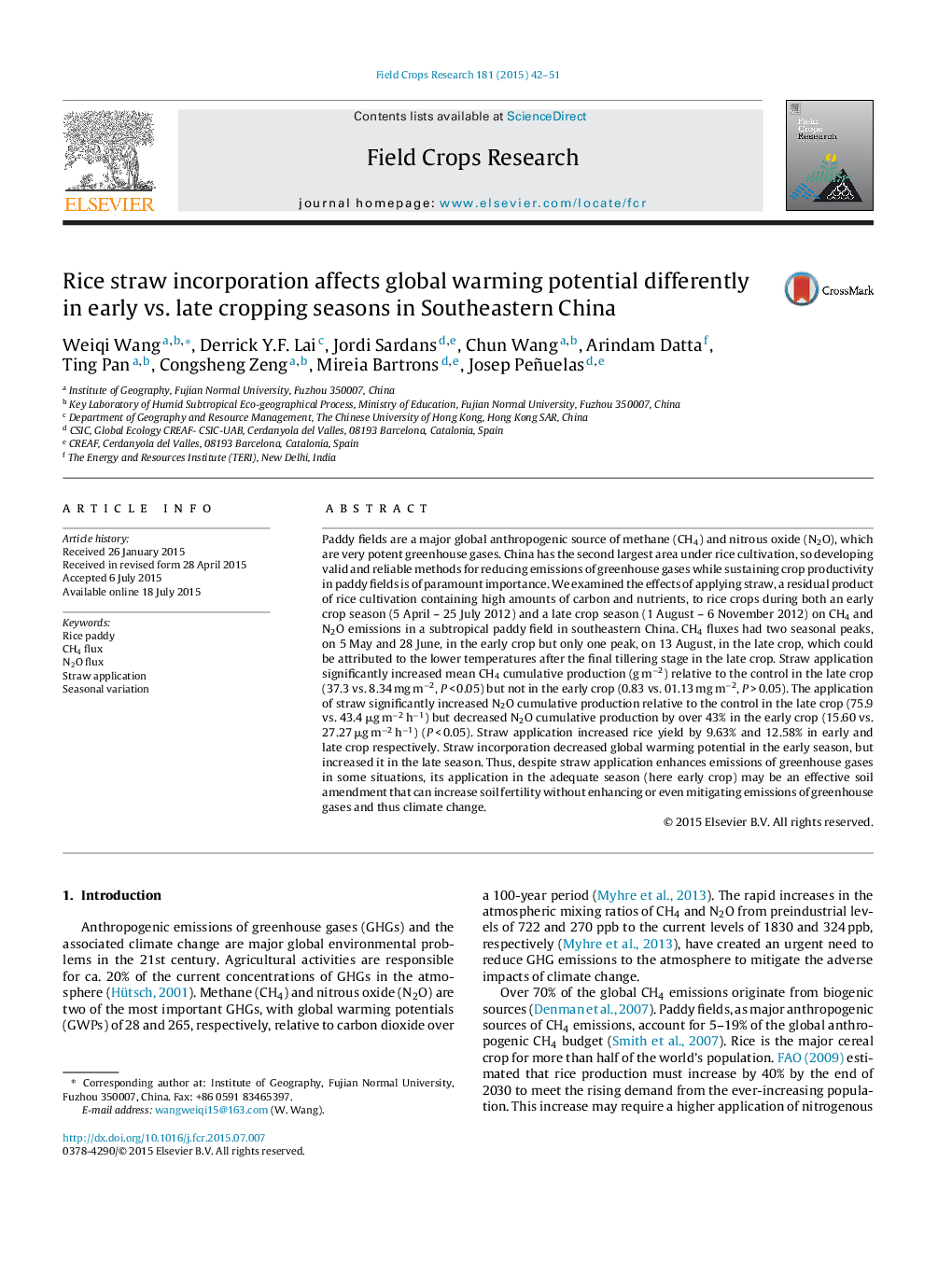| کد مقاله | کد نشریه | سال انتشار | مقاله انگلیسی | نسخه تمام متن |
|---|---|---|---|---|
| 4509879 | 1624682 | 2015 | 10 صفحه PDF | دانلود رایگان |
• Straw application had no significant effect on CH4 flux in the early crop.
• Straw application reduced N2O flux by over 43% in the early crop.
• Straw application significantly increased CH4 and N2O fluxes in the late crop.
• The lower temperatures during late crop were related with the low CH4 emissions.
Paddy fields are a major global anthropogenic source of methane (CH4) and nitrous oxide (N2O), which are very potent greenhouse gases. China has the second largest area under rice cultivation, so developing valid and reliable methods for reducing emissions of greenhouse gases while sustaining crop productivity in paddy fields is of paramount importance. We examined the effects of applying straw, a residual product of rice cultivation containing high amounts of carbon and nutrients, to rice crops during both an early crop season (5 April – 25 July 2012) and a late crop season (1 August – 6 November 2012) on CH4 and N2O emissions in a subtropical paddy field in southeastern China. CH4 fluxes had two seasonal peaks, on 5 May and 28 June, in the early crop but only one peak, on 13 August, in the late crop, which could be attributed to the lower temperatures after the final tillering stage in the late crop. Straw application significantly increased mean CH4 cumulative production (g m−2) relative to the control in the late crop (37.3 vs. 8.34 mg m−2, P < 0.05) but not in the early crop (0.83 vs. 01.13 mg m−2, P > 0.05). The application of straw significantly increased N2O cumulative production relative to the control in the late crop (75.9 vs. 43.4 μg m−2 h−1) but decreased N2O cumulative production by over 43% in the early crop (15.60 vs. 27.27 μg m−2 h−1) (P < 0.05). Straw application increased rice yield by 9.63% and 12.58% in early and late crop respectively. Straw incorporation decreased global warming potential in the early season, but increased it in the late season. Thus, despite straw application enhances emissions of greenhouse gases in some situations, its application in the adequate season (here early crop) may be an effective soil amendment that can increase soil fertility without enhancing or even mitigating emissions of greenhouse gases and thus climate change.
Journal: Field Crops Research - Volume 181, September 2015, Pages 42–51
